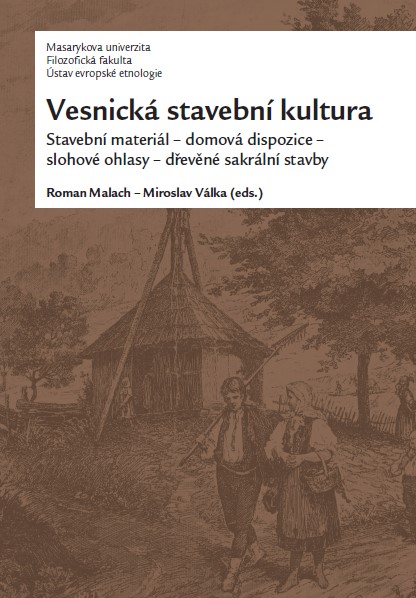Hliněné hospodářské stavby a jejich technologie
Mud farm buildings and their technology
Author(s): Věra Kovářů
Subject(s): Cultural history, Architecture, Agriculture, 19th Century
Published by: Masarykova univerzita nakladatelství
Keywords: Mud; farm building; chamber; ramming; unburnt bricks; mud coating; barn; mud cobs; vineyard building; wine cellar; layered walls; kiln-house for fruit drying; technique; peasant; grog;
Summary/Abstract: Mud has accompanied people from the time immemorial. They used it to build their dwellings, religious buildings, and farm buildings necessary for their agricultural activities. They needed these buildings to store corps and foods in them. It was the larder that stood within the shortest distance from the house or was even connected with the house under one common roof. Made of rammed earth or unburnt bricks, it could keep constant temperature. Mud larders or timbered larders coated with mud were widespread all over South and South-East Moravia and often even in the regions of Malá Haná and Vyškovsko. Peasants stored their corn in barns built from unburnt bricks. Barns built from mud cobs shaped as a smaller loaf of bread represent the older form from the 19th and the outset of the 20th century. This technique has rarely survived only in relicts in the ethnographic area of Haná. The same technique was used to enclose gardens and orchards. When studying buildings in vineyards, especially in the region around Znojmo or in South Moravia, one succeeded in discovering wine cellars built with the technique of layered or rammed mud interlayed with grog of small and bigger stones. Kiln-houses for fruit drying, disseminated in orchards, were built from unburnt bricks as well. Wooden kiln-houses coated with mud were found in the environs of Luhačovice. Mud farm buildings, if not damaged by penetrating water, were serving for many decades.
- Page Range: 62-70
- Page Count: 9
- Publication Year: 2014
- Language: Czech
- Content File-PDF

